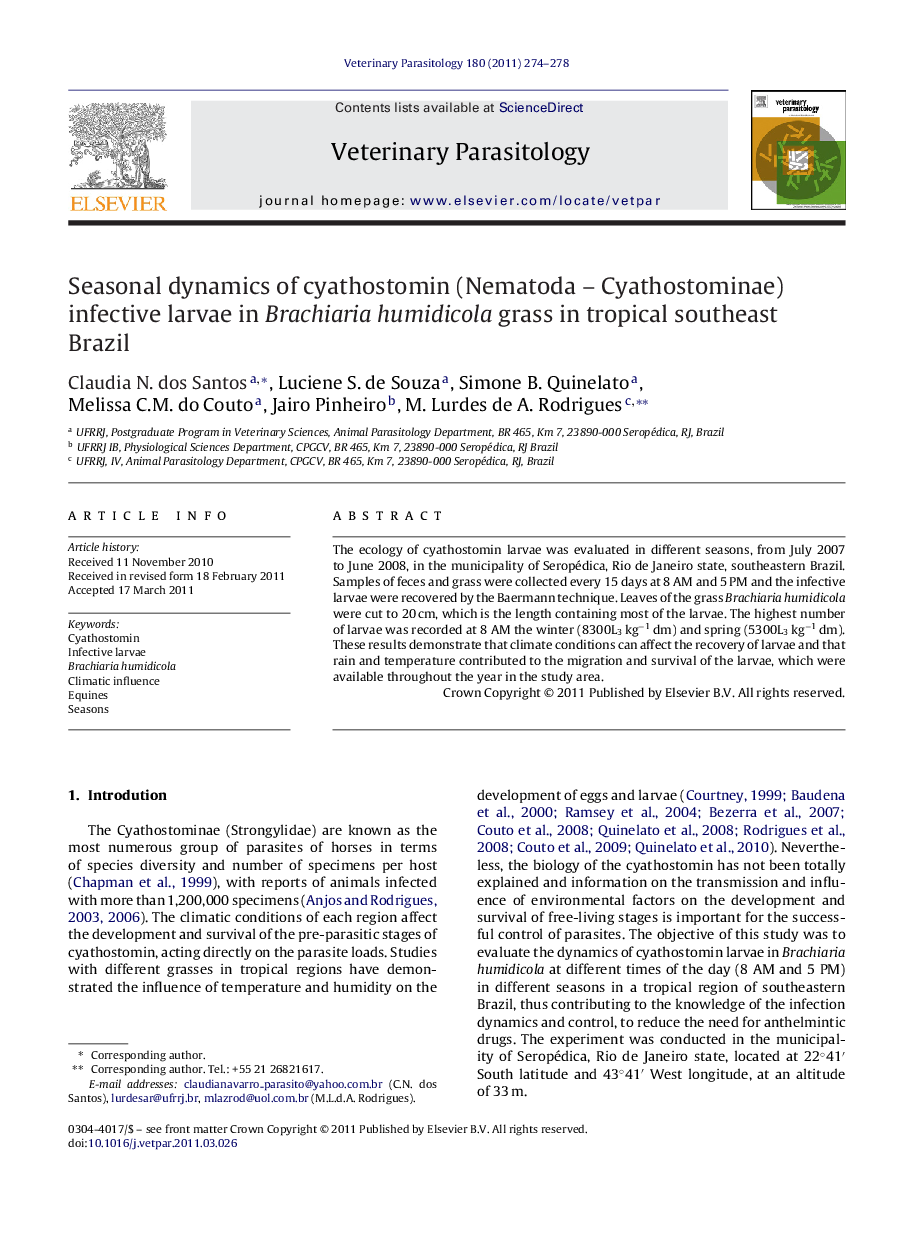| Article ID | Journal | Published Year | Pages | File Type |
|---|---|---|---|---|
| 5805713 | Veterinary Parasitology | 2011 | 5 Pages |
The ecology of cyathostomin larvae was evaluated in different seasons, from July 2007 to June 2008, in the municipality of Seropédica, Rio de Janeiro state, southeastern Brazil. Samples of feces and grass were collected every 15 days at 8 AM and 5 PM and the infective larvae were recovered by the Baermann technique. Leaves of the grass Brachiaria humidicola were cut to 20Â cm, which is the length containing most of the larvae. The highest number of larvae was recorded at 8 AM the winter (8300L3Â kgâ1Â dm) and spring (5300L3Â kgâ1Â dm). These results demonstrate that climate conditions can affect the recovery of larvae and that rain and temperature contributed to the migration and survival of the larvae, which were available throughout the year in the study area.
